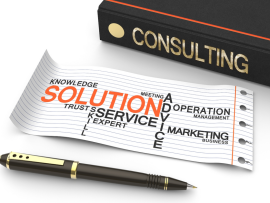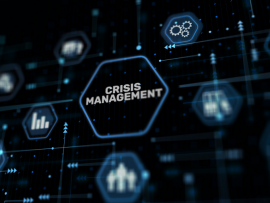In the dynamic landscape of today's professional world, the concept of workplace culture has evolved beyond the traditional confines of office walls. Workplace culture 2.0 represents a paradigm shift, emphasizing the creation of a positive and productive environment that goes beyond the superficial and fosters a genuine sense of belonging and collaboration. Let's explore the key elements that contribute to this upgraded version of workplace culture. Inclusivity and Diversity: Workplace culture 2.0 is built on the foundation of inclusivity and diversity. Organizations are recognizing the value of a diverse workforce and embracing different perspectives, backgrounds, and experiences. Creating an inclusive environment not only enhances employee morale but also brings a wealth of creativity and innovation to the table. Flexible Work Arrangements: The traditional 9-to-5 workday is giving way to more flexible arrangements. Workplace Culture 2.0 understands the importance of work-life balance and offers flexibility in work schedules, remote work options, and alternative work arrangements. This flexibility not only attracts top talent but also contributes to employee satisfaction and overall productivity. Open communication channels: Transparent and open communication is a cornerstone of workplace culture 2.0. Organizations are fostering a culture where employees feel comfortable expressing their ideas, concerns, and feedback. Whether through regular town hall meetings, employee forums, or digital communication platforms, the emphasis is on creating a two-way dialogue that strengthens the connection between leadership and the workforce. Emphasis on..
Read MoreSolutions consultants must bridge technical solutions with business needs, requiring deep understanding and effective communication. This article explores practical strategies for bridging this gap and addressing diverse client bases. Understand Your Audience The first step in effective communication is understanding who your audience is. Solutions consultants typically deal with a range of stakeholders, from technical experts to non-technical decision-makers. Tailoring your communication style based on the audience’s technical knowledge and interest level is crucial: For Technical Audiences: Focus on specifications, data, and technical processes. Use industry jargon appropriately and provide depth. For Non-Technical Audiences: Simplify explanations and relate technical details to business outcomes. Avoid jargon and instead use analogies or simple comparisons to make complex ideas more accessible. Use Visual Aids Visual aids can be an incredibly effective tool for explaining complex solutions. Diagrams, flowcharts, and infographics can help illustrate relationships, processes, and concepts in a clear and digestible manner: Diagrams: Use system architecture diagrams or flowcharts to explain how different components of a solution interact. Infographics: Break down data or workflows in a visually engaging way that highlights the most crucial points. Slideshows: Prepare a well-structured PowerPoint presentation that guides your audience through your discussion points step by step. Focus on Benefits, Not Just Features While it’s important to discuss the technical aspects of a solution, focusing on how these features translate into real-world benefits for the business is..
Read MoreA comprehensive needs analysis is crucial for identifying business gaps and recommending effective strategies to clients, ensuring tailored solutions that effectively address their specific challenges and goals. Step 1: Prepare for the Needs Analysis Research the Client’s Business Before meeting with the client, gather as much information as possible about their business, industry, and competitors. This background knowledge will help you ask informed questions and understand the context of their challenges. Define the Objectives Clarify the purpose of the needs analysis. Are you looking to understand a specific problem, explore opportunities for improvement, or assess the overall business strategy? Defining your objectives will guide the questions you ask and the data you collect. Step 2: Conduct Initial Meetings Schedule a Kickoff Meeting Arrange an initial meeting with key stakeholders to introduce yourself, explain the purpose of the needs analysis, and outline the process. This meeting sets the stage for a collaborative relationship and ensures everyone is on the same page. Ask Open-Ended Questions During the kickoff meeting, ask open-ended questions to encourage detailed responses. Questions like “What are your biggest challenges?” or “What are your short-term and long-term goals?” can provide valuable insights into the client’s needs. Step 3: Gather Data Conduct Interviews and Surveys Interview key stakeholders, including executives, managers, and frontline employees, to get a comprehensive view of the business. Use surveys to gather quantitative data and identify..
Read MoreThis blog discusses the importance of data analytics in solutions consulting, highlighting its transformative role in enhancing consultants' solutions by providing insights into client operations, market dynamics, and future trends, ultimately driving efficiency and cost reduction. The Role of Data Analytics in Solutions Consulting Data analytics involves examining large sets of data to uncover underlying patterns, correlations, and insights. In the context of solutions consulting, this capability is invaluable as it helps consultants deliver more tailored, evidence-based solutions to their clients. 1. Enhanced Diagnostic Capabilities Before a consultant can offer solutions, they need to diagnose the problem accurately. Data analytics enables a deep dive into the client's operational data, helping to pinpoint inefficiencies and areas for improvement with a high degree of precision. By leveraging predictive analytics, consultants can not only assess current issues but also forecast potential future challenges that the client may face. 2. Customized Strategy Development Every business is unique, and off-the-shelf solutions rarely capture the specific needs of each client. Data analytics allows consultants to develop customized strategies that are precisely aligned with the client’s objectives and market conditions. By analyzing historical data, client performance can be benchmarked against industry standards to highlight gaps and opportunities for optimization. 3. Improved Decision-Making Data-driven decision-making is one of the most significant advantages offered by analytics. With comprehensive data analysis, consultants can provide clients with actionable insights that are..
Read MoreSolutions consultants are essential in resolving client problems, but their unique challenges can hinder project success and client satisfaction. This blog identifies common obstacles and offers practical strategies to overcome them. Challenge 1: Setting Realistic Expectations Problem: Clients often have high expectations regarding what consulting services can achieve and how quickly results can be delivered. Unrealistic expectations can lead to dissatisfaction and disputes. Solution: Clear Communication: From the onset, clearly communicate what is achievable within the given timeframe and budget. Use specific, understandable examples to outline the expected outcomes. Regular Updates: Keep the client informed about progress, challenges, and changes to the project scope or timeline. Transparency builds trust and helps manage expectations effectively. Challenge 2: Scope Creep Problem: Scope creep occurs when the project’s scope expands gradually without proper control, often leading to resource strain and project delays. Solution: Detailed Contracts: Ensure that the project scope is well-defined in the contract, including specific deliverables, timelines, and terms for handling extra requests. Firm Project Management: Utilize robust project management tools and methodologies to keep the project on track. Be assertive about what is outside the agreed scope and negotiate adjustments in scope as separate agreements. Challenge 3: Resistance to Change Problem: Change is often met with resistance from a client’s staff, which can impede the implementation of new strategies or solutions. Solution: Stakeholder Engagement: Engage key stakeholders early in the..
Read MoreSolutions consultants are crucial in digital transformation, bridging technology and business needs. Their ability to design and implement effective solutions drives organizational growth and efficiency. Technical Skills 1. Technical Proficiency Solutions consultants must have a strong understanding of various technologies, including software development, systems integration, and IT infrastructure. This technical knowledge allows them to design robust solutions that meet client requirements and can be effectively implemented. 2. Data Analysis Analyzing data to uncover insights is crucial for identifying business problems and opportunities. Solutions consultants should be proficient in using data analysis tools and techniques to inform their recommendations and drive data-driven decisions. 3. Project Management Effective project management skills are essential for overseeing the implementation of solutions. Solutions consultants must be able to plan, execute, and monitor projects, ensuring they are completed on time, within budget, and to the client's satisfaction. 4. Knowledge of Industry Trends Staying current with the latest industry trends and technological advancements is vital for solutions consultants. This knowledge enables them to provide cutting-edge solutions that give clients a competitive edge. Soft Skills 1. Communication Strong communication skills are essential for solutions consultants. They must be able to clearly articulate complex technical concepts to non-technical stakeholders, ensuring everyone understands the proposed solutions and their benefits. 2. Problem-Solving Solutions consultants need excellent problem-solving skills to diagnose issues, identify root causes, and develop effective solutions. This involves thinking..
Read MoreSolutions consulting involves advising businesses on strategies to solve problems or improve operations, but consultants must navigate ethical dilemmas responsibly. This blog explores these ethical dilemmas and provides guidance. The Ethical Landscape of Solutions Consulting Consultants are often privy to sensitive information that can significantly impact the financial health and workplace culture of the organizations they assist. This position of influence comes with substantial ethical responsibilities: Confidentiality: Consultants must safeguard confidential information. Objectivity: They need to provide advice that benefits the client rather than themselves or their consulting firm. Integrity: They must be honest and transparent in their communication and business practices. Common Ethical Dilemmas in Solutions Consulting 1. Conflict of Interest A conflict of interest occurs when a consultant has competing interests or loyalties that could make it difficult to fulfill their duties impartially. For instance, recommending a service because it benefits the consultant financially, rather than because it is the best option for the client, can compromise ethical standards. Solution: Always disclose any potential conflicts of interest to the client. Where possible, avoid situations where personal gain could influence your professional advice. 2. Overpromising Results Consultants might feel pressured to promise overly optimistic outcomes to secure a contract. Overpromising can lead to unrealistic client expectations and potential dissatisfaction with the delivered results. Solution: Set realistic expectations from the outset. Ensure that all promises are based on data and..
Read MoreThis blog offers a step-by-step guide on creating compelling solution proposals that not only capture attention but also win clients and drive business growth, highlighting the importance of addressing specific client problems. Step-by-Step Guide to Crafting Your Proposal Step 1: Do Your Research Before you begin writing your proposal, you need a deep understanding of your client's industry, company, and challenges. This research will help you tailor your proposal to address the client’s specific needs and circumstances, demonstrating that you have a vested interest in their success. Industry Understanding: Stay updated on trends, challenges, and opportunities within the client’s industry. Client Knowledge: Gather information about the client’s business operations, history, and culture. Identify Pain Points: Clearly define the problems or challenges the client is facing that your solution can resolve. Step 2: Define the Scope of Your Solution Clearly outline what your solution entails and what it does not. This clarity helps manage expectations and prevents misunderstandings down the line. Services and Products: List the services or products you are proposing. Include any variants or customizable options, if applicable. Deliverables: Specify what tangible outcomes the client should expect upon project completion. Exclusions: Clearly state what is not included in your proposal to avoid scope creep. Step 3: Articulate the Benefits Instead of merely listing the features of your service or product, focus on the benefits it brings to the client...
Read MoreSolutions consultants play a crucial role in navigating crises in the fast-paced business environment, providing specialized expertise and objective perspectives to guide businesses through crisis management and recovery. Understanding the Role of Solution Consultants Solutions consultants identify, analyze, and solve business problems, working with diverse clients across industries. They provide strategic insights and actionable solutions during crises for business stabilization. Key Contributions of Solutions Consultants in Crisis Management 1. Rapid Response and Assessment Overview: When a crisis hits, the first step is a rapid assessment. Solutions consultants quickly gather data, assess damage, and identify the immediate risks to business operations. Action Steps: Conduct a thorough analysis of the crisis and its impacts on all aspects of the business. Identify key areas of vulnerability and immediate threats to operational continuity. 2. Crisis Strategy Development Overview: Consultants develop tailored strategies that address the specific nuances of the crisis at hand. This often involves making tough decisions quickly, such as cost adjustments, resource reallocation, or temporary suspension of operations. Action Steps: Work with leadership teams to outline clear, actionable strategies for crisis management. Prioritize actions based on their potential impact on stabilizing the business. 3. Communication Management Overview: Effective communication is critical in crisis management. Solutions consultants help formulate communication strategies that maintain transparency with stakeholders, including employees, customers, investors, and the public. Action Steps: Develop a communication plan that addresses all stakeholders'..
Read MoreIn today's digital economy, mobile payment apps must work seamlessly across multiple platforms to provide users with secure, efficient, and consistent experiences. Whether a user accesses the app on iOS, Android, or web browsers, performance optimization is essential for speed, reliability, and security. Here’s a guide to optimizing mobile payment apps for cross-platform performance, ensuring smooth transactions across different devices and operating systems. 1. Choose the Right Cross-Platform Development Framework Building a cross-platform mobile payment app requires a framework that supports high performance and security. Best Frameworks for Cross-Platform Payment Apps: React Native – Offers native-like performance while maintaining a single codebase for iOS and Android. Flutter – Provides fast rendering, high responsiveness, and consistent UI across platforms. Xamarin – Uses C# for seamless integration with existing Microsoft ecosystems. Using the proper framework reduces development time and ensures a consistent user experience. 2. Optimize API Performance for Faster Transactions A mobile payment app relies on APIs to process transactions, verify users, and interact with banking systems. Optimized APIs improve speed and reliability. Best Practices: Use RESTful APIs with JSON for efficient data exchange. Implement GraphQL to fetch only necessary data, reducing server load. Optimize API response times with caching and asynchronous processing. Ensure secure API endpoints with OAuth 2.0 authentication. Fast and secure APIs improve the overall payment speed and user satisfaction. 3. Ensure Secure and Seamless Authentication Security is..
Read More










